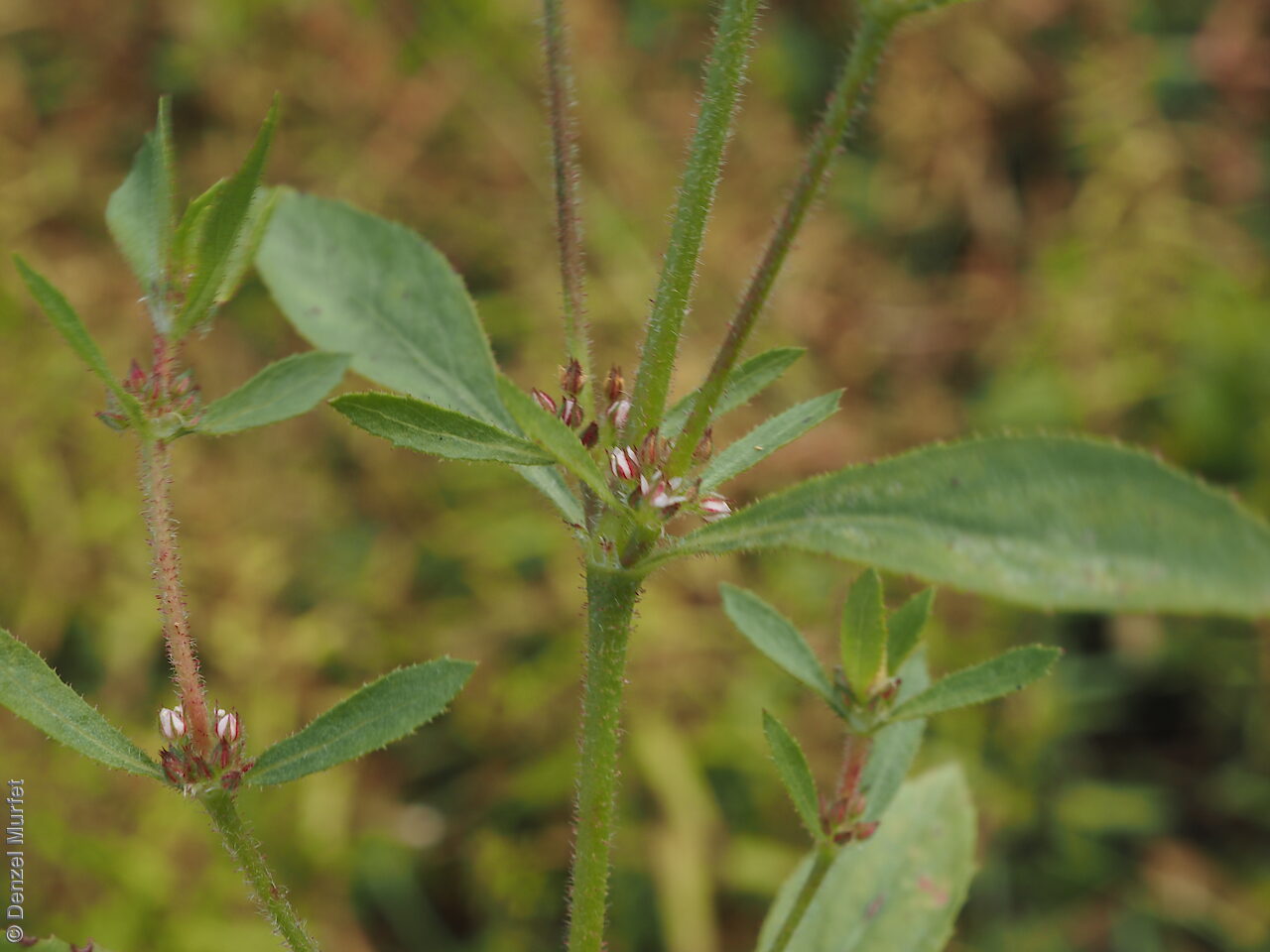
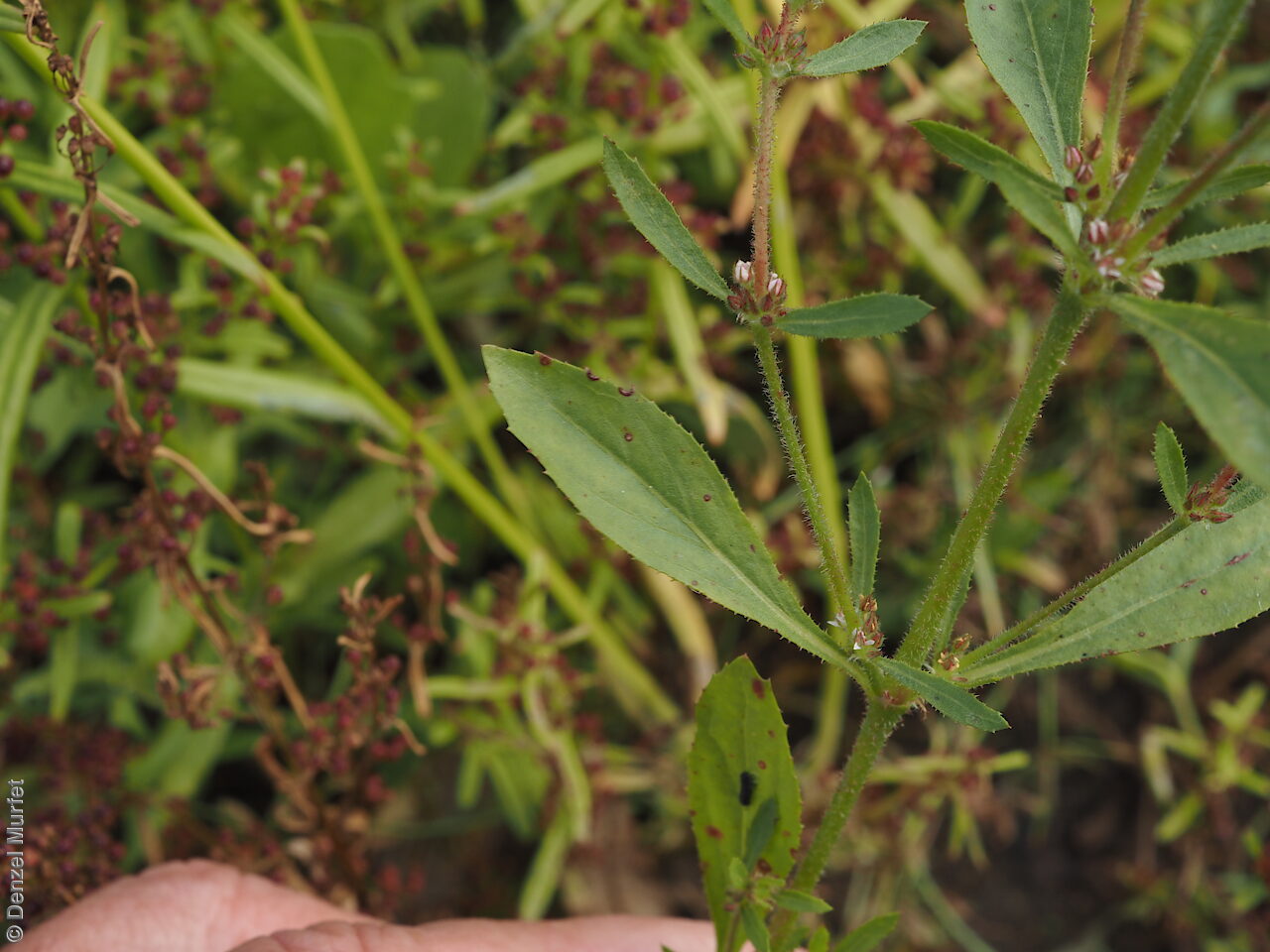
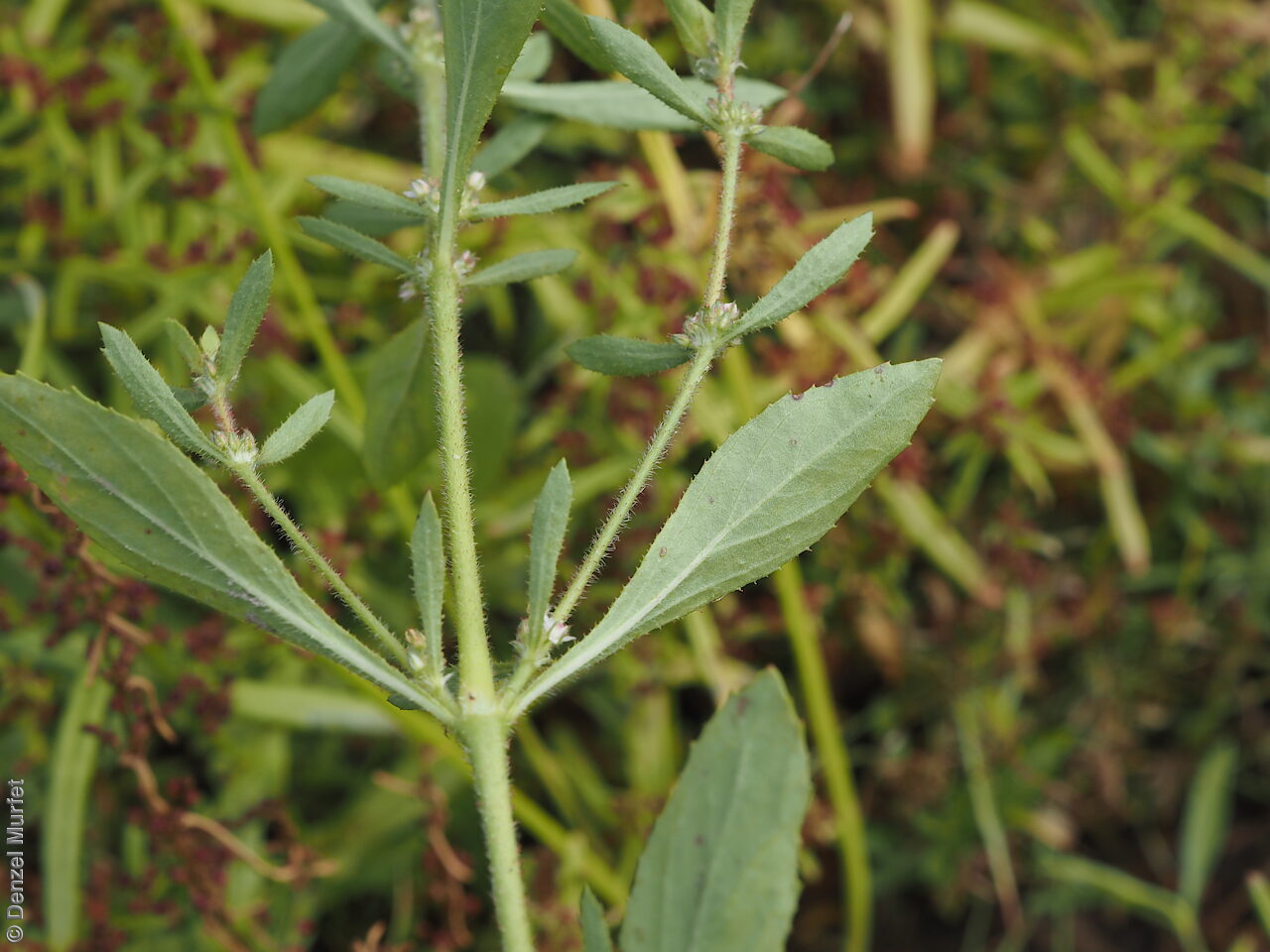
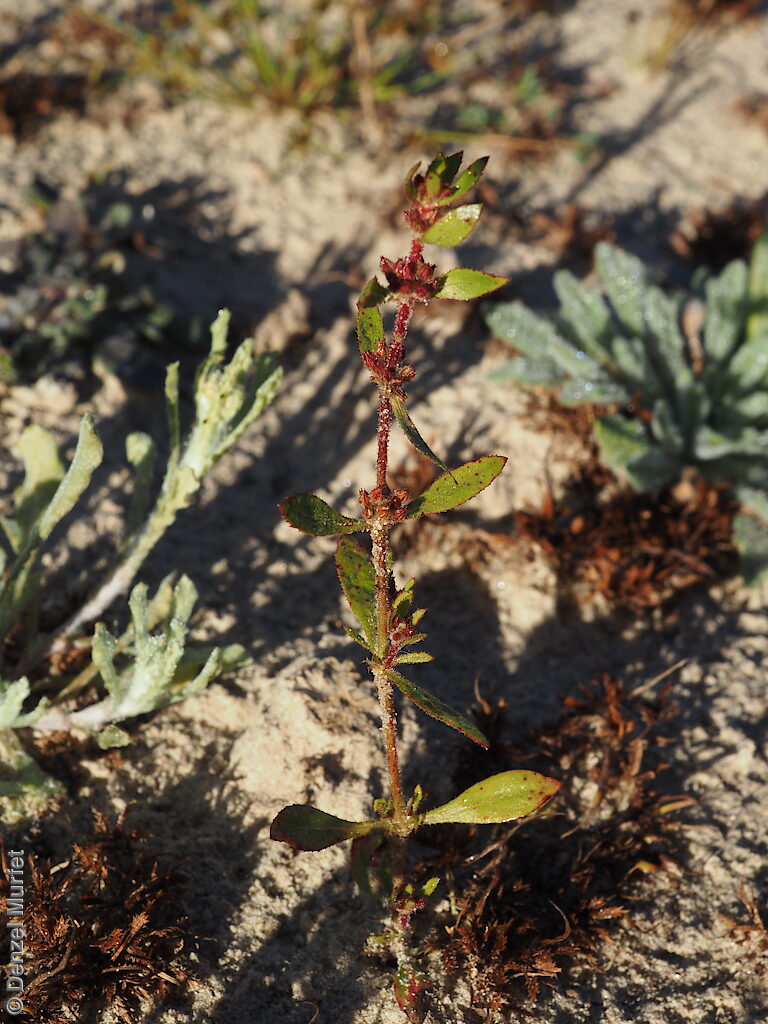
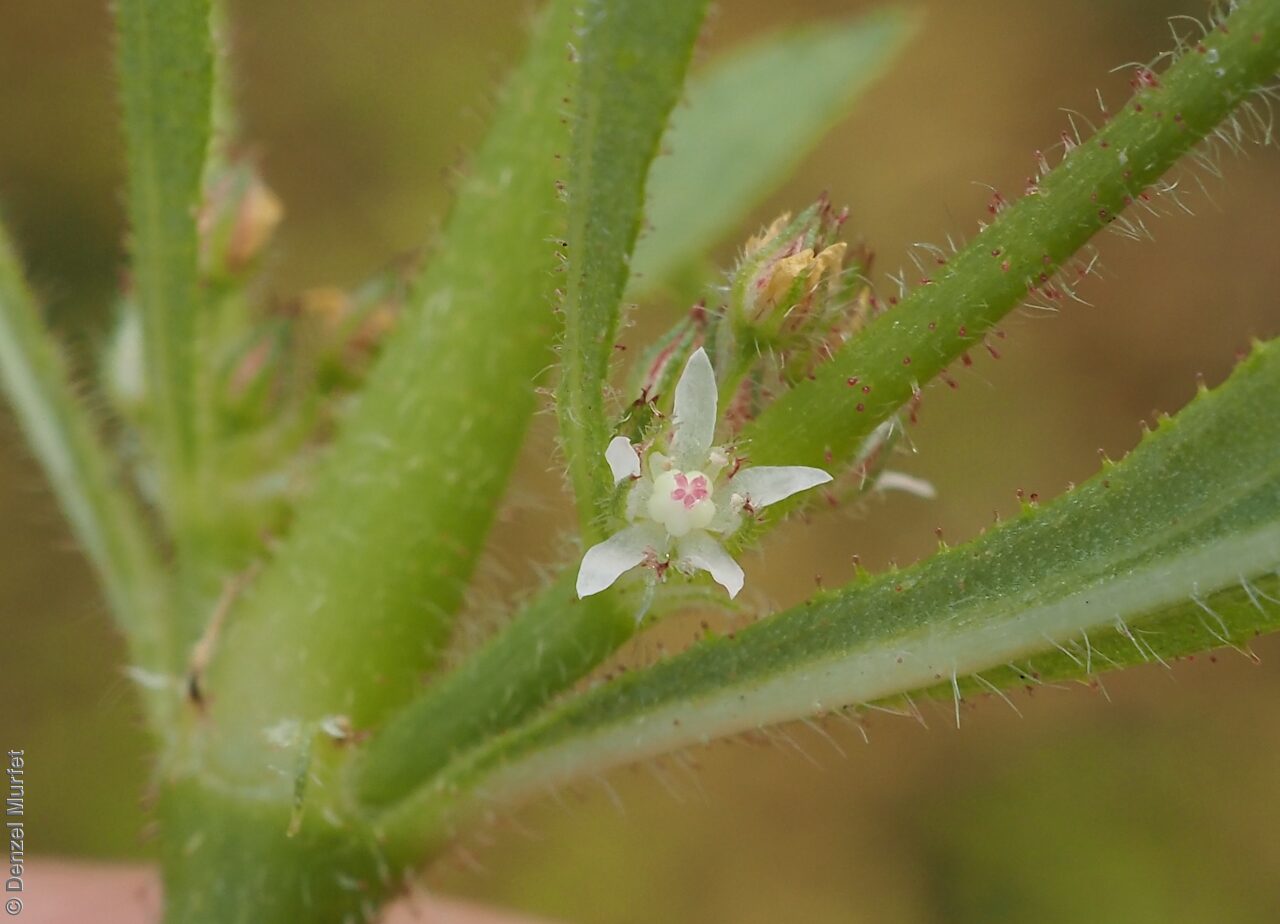
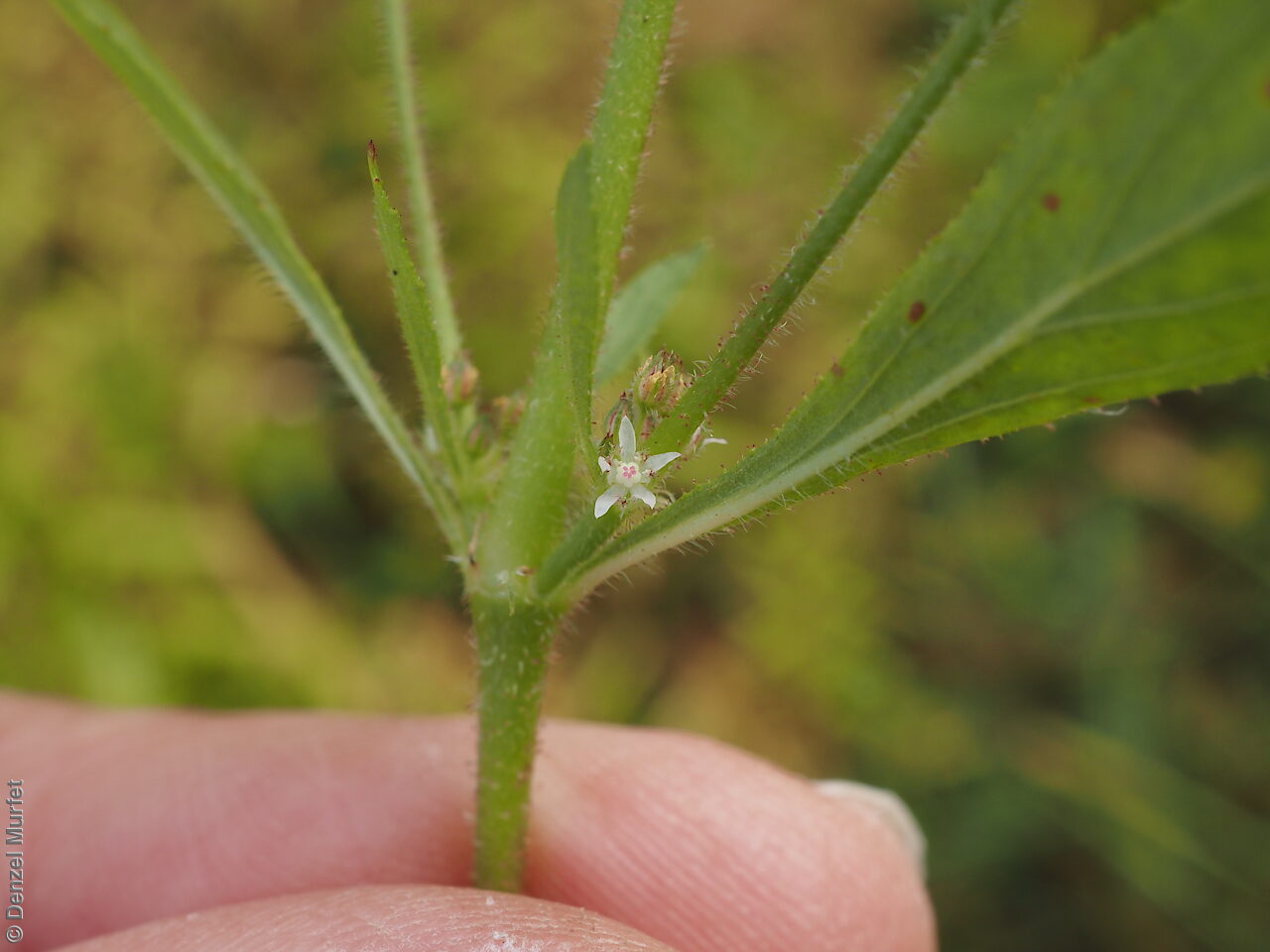
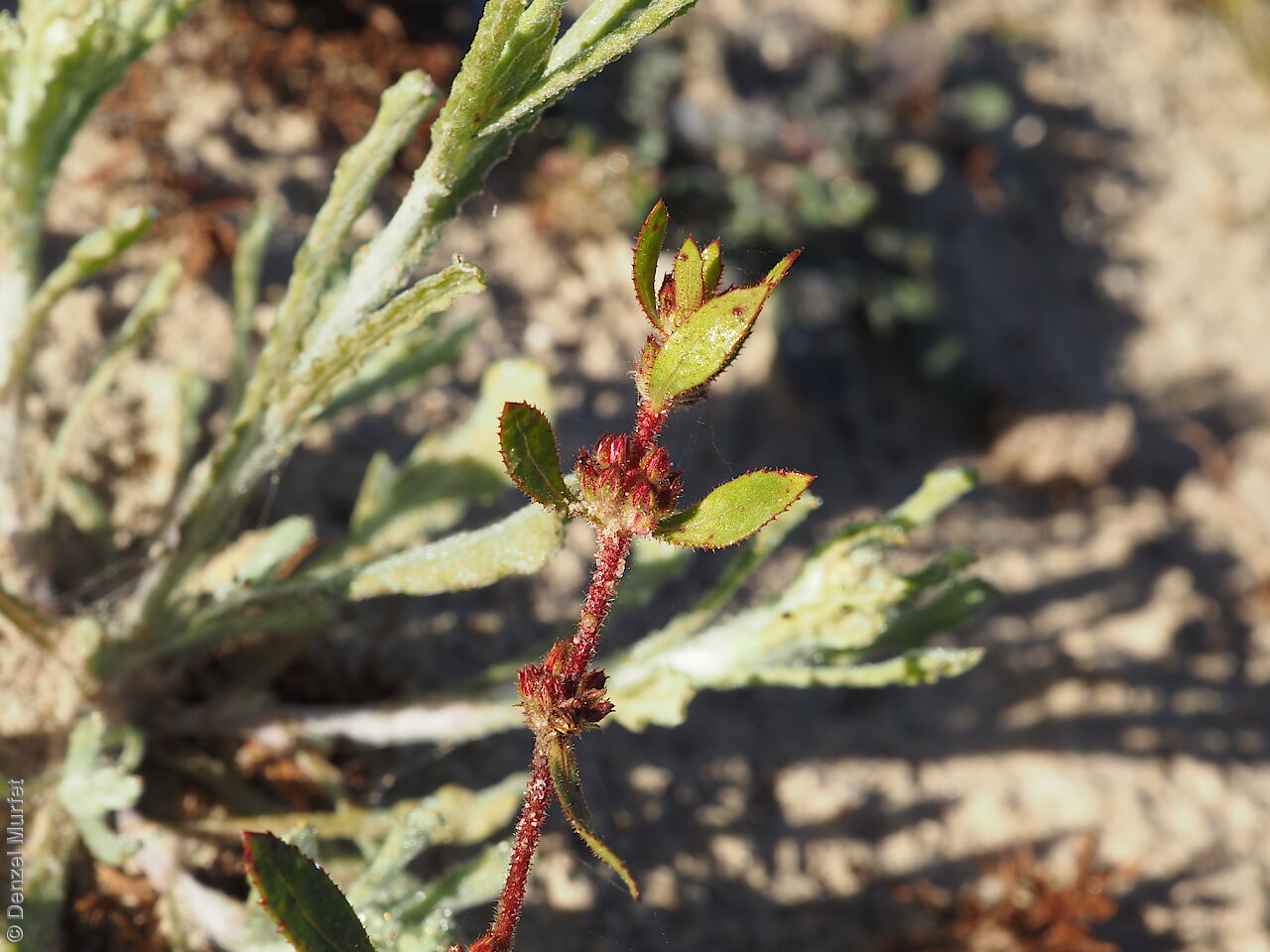
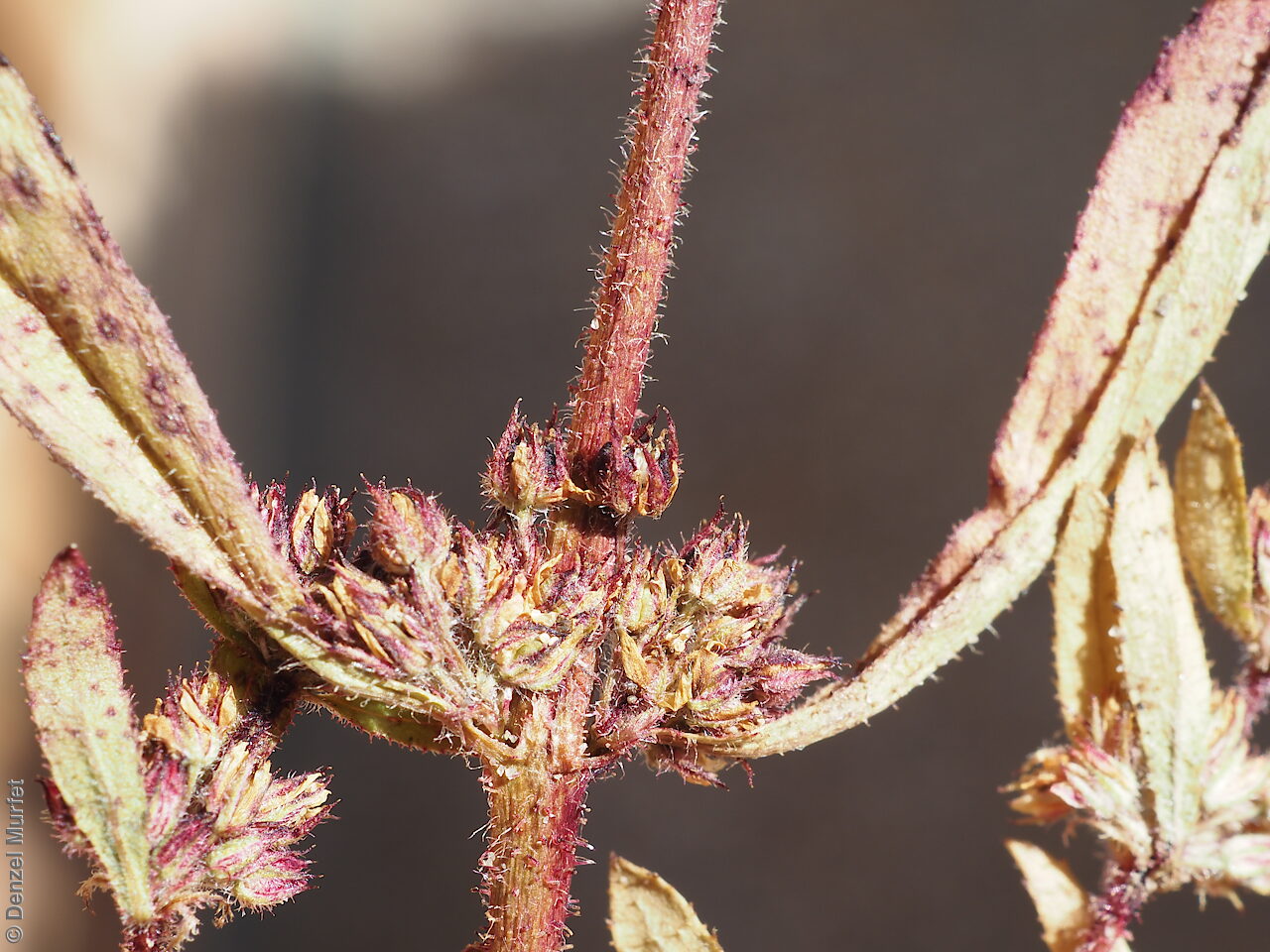
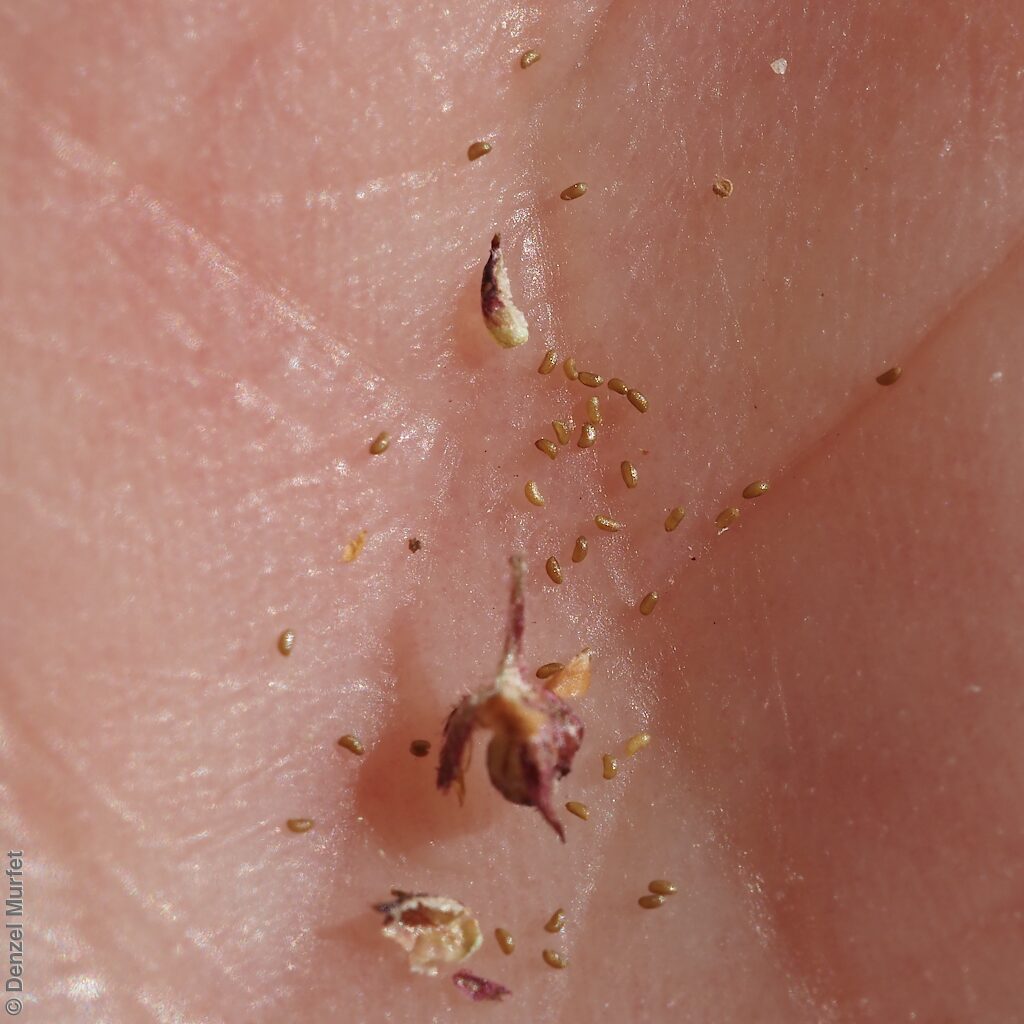
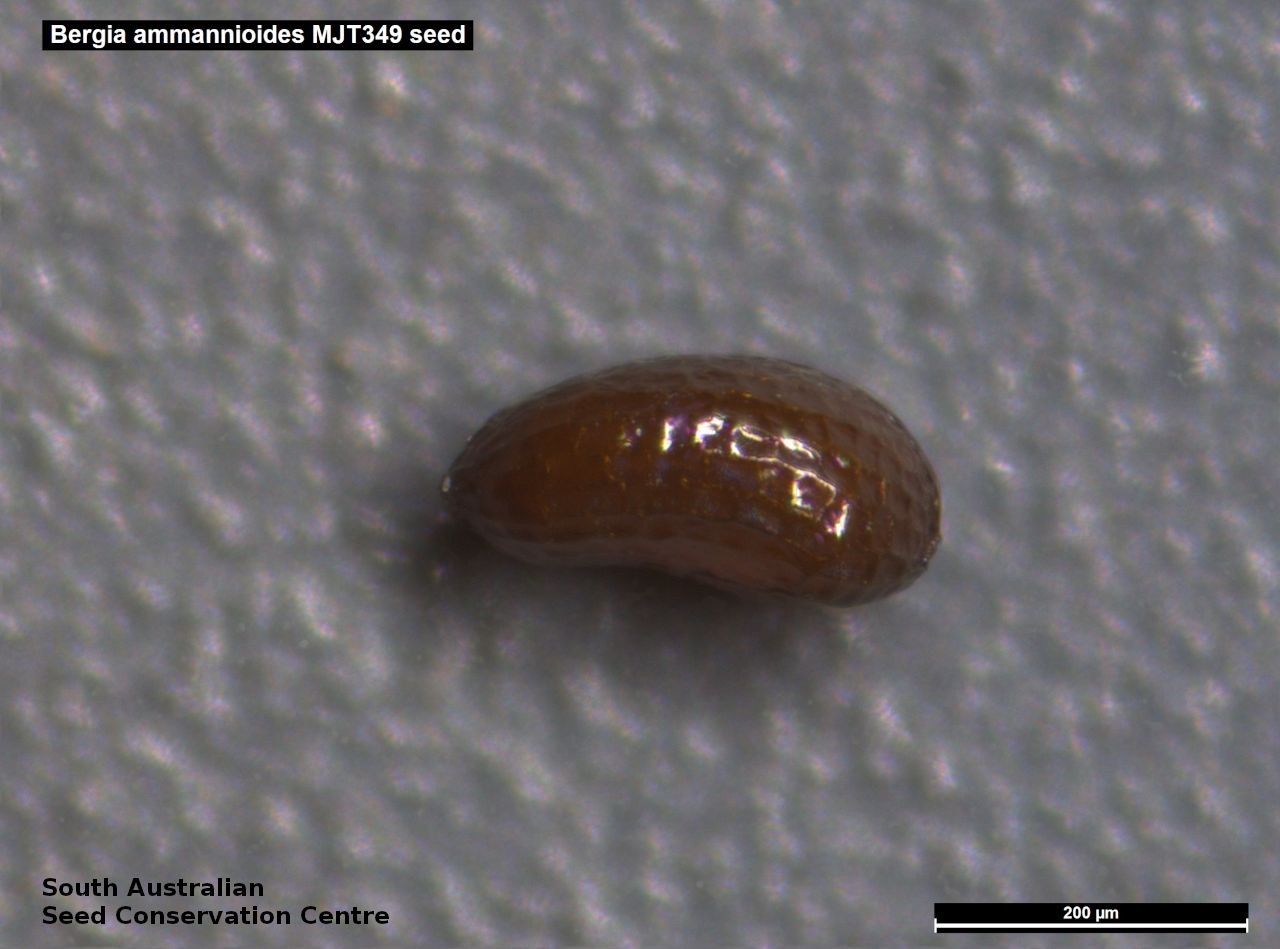



Etymology
Bergia named after Dr Petter Jonas Bergius (1730-90), Swedish physician and botanist. Ammannioides refers to the superficial similarity of this species to the genus Ammannia.
Distribution and status
Found in the far north-east corner of South Australia, growing on clay-pans, swamps, creeks and saline areas, in clay or sand. Also found in all mainland states. Native. Uncommon in South Australia. Uncommon in New South Wales and Victoria. Common in the other states.
Herbarium regions: Lake Eyre, Murray
NRM regions: South Australian Arid Lands, South Australian Murray-Darling Basin
AVH map: SA distribution map (external link)
Plant description
Prostrate or erect annual herb to 40 cm. Indumentum of eglandular hairs with occasional long type a glandular hairs. Leaves narrow-elliptic to elliptic, to 25 mm long and 8 mm wide, acute, glabrous or sparse hairs usually restricted to base or nerves, margin serrate, veins prominent. Stipules to 2 mm long and 0.5 mm wide at base. Flowers in dense fascicles, pedicel to 4 mm long. Bracteoles inconspicuous, at base of pedicel, linear, to 1 mm long. Sepals 5, narrow-ovate, to 2 mm long and 0.5 mm wide, acute to acuminate, pubescent, green, margin narrow, fimbriate, keel absent. Petals 5, narrow-ovate, to 2 mm long and 0.5 mm wide, acute, equal to sepals, erect at anthesis. Stamens 5, to 1 mm long, filament base slightly expanded. Fruits are globular capsule to 2 mm diameter, 5-locular. Seed embryo type is linear.
Seed collection and propagation
Collect whole plant with maturing capsules, those that are fat, drying off and contain brown seeds. Place the plants in a tray and leave to dry for one to two weeks. Then rub the plant especially the capsules gently by hand to dislodge the seeds. Use a fine sieve to separate the unwanted material. Be very careful as the seeds are very small. Store the seeds with a desiccant such as dried silica beads or dry rice, in an air tight container in a cool and dry place.